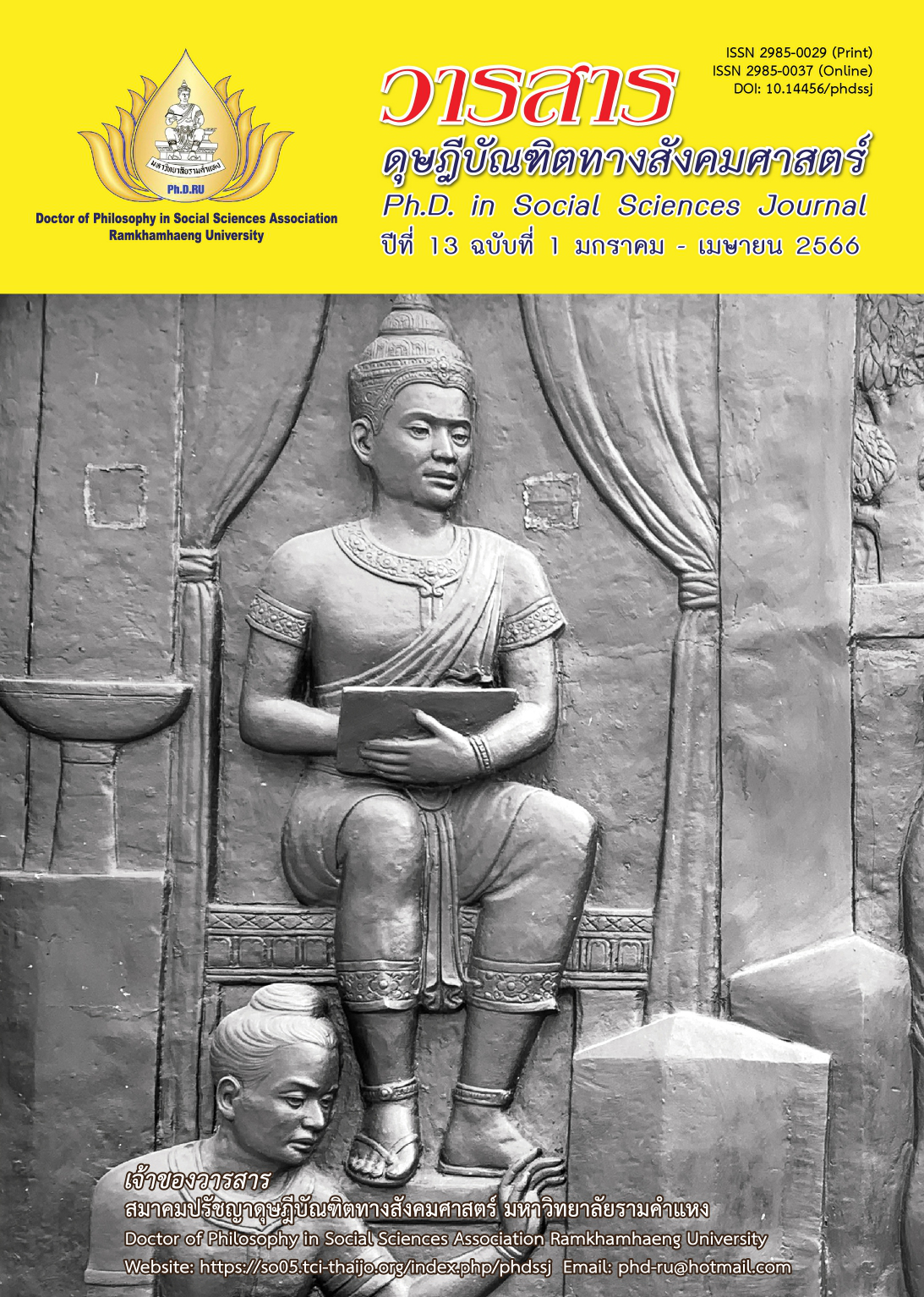A Comparative Analysis of Partial Structural Models on Brand Equity Affecting Consumers’ Repurchase Intent on Thai Chili Paste Products in Each Generation
Main Article Content
Abstract
This research article aims to study the influence of brand equity on the repurchase intent of one brand of Thai chili paste, Classified by consumer groups in each age group (generation). The sample group used in the research was a group of 482 consumers who used to buy a certain brand of Thai chili paste through the supermarket channel and returned to buy it again. It was survey research, and a questionnaire was used as a tool for data collection. Inferential statistics were used to test the hypothesis by using partial least squares structure model analysis (PLS-SEM).
The results of the research reveal that: the conformity test of the structural equation model compared with the criteria was consistent at a good level. Based on the analysis of the influence of four path variables at the level of statistical significance of 0.05, the results showed that each generation had different influences on brand equity and repurchase intent as follows: Gen-X was influenced by perceived quality and brand loyalty. Gen-Y is influenced by brand awareness, perceived quality, and brand loyalty. Gen-Z is influenced by brand association and brand loyalty, and when considering all generations Influencing brand awareness, perceived quality, brand connectivity, and brand loyalty It can be seen that the factor of brand loyalty will affect the repurchase intentions of consumers in every generation.
Article Details

This work is licensed under a Creative Commons Attribution-NonCommercial-NoDerivatives 4.0 International License.
Academic articles, research articles, and book reviews in the Ph.D. in Social Sciences Journal are author’s opinions, and not the publisher’s, and is not the responsibility of the Ph.D. in Social Sciences Journal Philosophy Association, Ramkhamhaeng University. (In the case that research is done on human, the researcher has to be trained in Ethics for Doing Research on Human Training and has to produce the evidence of the training).
References
Aaker, D. A. (1996). Measuring brand equity across products and markets. California Management Review, 38(3), 102-120.
Boriphonmongkol, R., & Chienwattanasook, K. (2020). Perceived product quality and service quality that affect repurchase of industrial cleaner products. Journal of Arts Management, 4(1), 166-179. [In Thai]
Buil, I., De Chernatony, L., & Martinez, E. (2013). Examining the role of advertising and sales promotions in brand equity creation. Journal of Business Research, 66(1), 115-122.
Chaibunharn, J., & Hansanti, S. (2019). Brand identity and brand image influencing consumer purchase decision towards Ford pickup truck in Bangkok. Modern Management Journal, 16(1), 229-238. [In Thai]
Chernatony, L., & McDonald, M. (2003). Creating powerful brands in consumer: Service and industrial markets (2nd ed.). Elsevier/Butterworth-Heinemann.
Damjam, S., & Panich, T. (2019). Brand equity components affecting the buying decision of Under Armour sportswear brand in Bangkok metropolitan region. Journal of Rangsit Graduate Studies in Business and Social Sciences, 5(2), 143-156.
Forbes Thailand. (2022). “Mae Pranom” Top secret effect to success of generation 3. Retrieved from https://forbesthailand.com/sponsored-content/maepranom.html
Greenberg, E. H., & Weber, K. (2008). Generation we: How millennial youth are taking over America and changing our world forever. Pachatusan.
Hair, J. F., Anderson, R. E., Tatham, R. L., & Black, W. C. (2010). Multivariate data analysis (7th ed.). Prentice Hall.
Hellier, P. K., Geursen, G. M., Carr, R. A., & Richard, J. A. (2003). Customers repurchase intention: A general structural equation model. European Journal of Marketing, 37(11/12), 1762-1800.
Hsu, M. H., Chang, C. M., Chu, K. K., & Lee, Y. J. (2014). Determinants of repurchase intention in online group-buying: The perspectives of DeLone & McLean IS success model and trust. Computers in Human Behavior, 36, 234-345.
Kim, C., Galliers, R. D., Shin, N., Ryoo, J., & Kim, J. (2012). Factor influencing internet shopping value and customer repurchase intention. Electronic Commerce Research and Application, 11(4), 374-387.
Kotler, P., & Keller, K. L. (2012). Marketing management (14th ed.). Pearson Education.
Krongten, M., & Rattanapongpinyo, T. (2016). Factors related to customers loyalty with brand Café Amazon PTT Petrol station in the Nakhon Pathom Municipality. In The Proceeding of 9th National Kasetsart University Kampeangsan Campus Conference, Nakhon Pathom. [In Thai]
MacKinnon, D. P., Yoon, M., Lockwood, C. M., & Taylor, A. B. (2006). A comparison of methods to test the mediated and other intervening variable effects in logistic regression. Unpublish Manuscript.
Panthura, G. (2013). Consumers perceived value and repurchase intention of consumers toward OTOP food products. NIDA Development Journal, 53(3), 201-230. [In Thai]
Pappu, R., Quester, P. G., & Cooksey, R. W. (2005). Consumer-based brand equity: Improving the measurement-empirical evidence. Journal of Product and Brand Management, 14(3), 143-154.
Piriyakul, M. (2010, May 27-28). Partial least square path modeling (PLS Path modeling). Paper Presentation in the 11th Academic Conference on Statistics and Applied Statistics, 2010, Chiang Mai, Thailand. [In Thai]
Pearl, J. (2009). Causality: Models, reasoning, and inference (2nd ed.). Cambridge University Press.
Sangsuphan, B., & Chienwattanasook, K. (2020). Brand equity and service marketing mix factors affecting repurchase decision-making of coffee of café amazon customers at department stores in Pathum Thani province. Faculty of Humanities and Social Sciences Thepsatri Rajabhat Journal, 11(1), 48-59. [In Thai]
Wagner, C. H. (1982). Simpson’s paradox in real life. The American Statistician, 36(1), 46-48.
Washburn, J. H., & Plank, R. E. (2002). Measuring brand equity: An evaluation of a consumer-based brand equity scale. Journal of Marketing Theory and Practice, 10(1), 46-62.
Yoo, B., & Donthu, N. (2001). Developing a scale to measure the perceived quality of an Internet shopping site (SITEQUAL). Quarterly Journal of Electronic Commerce, 2(1), 31-47.


